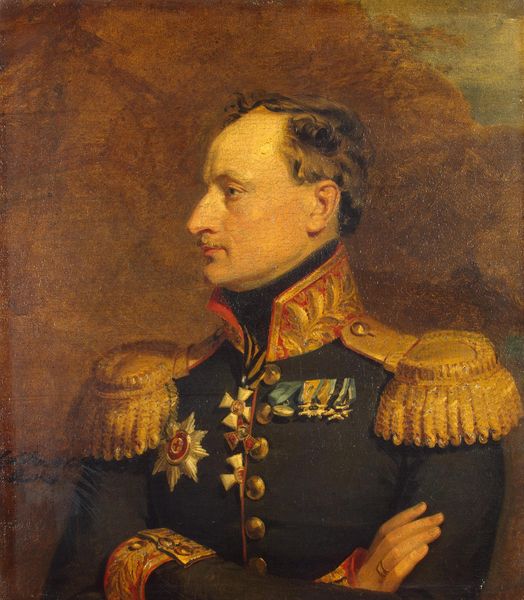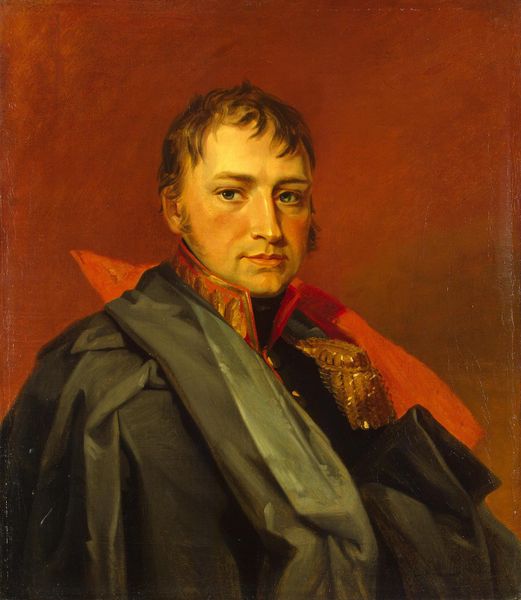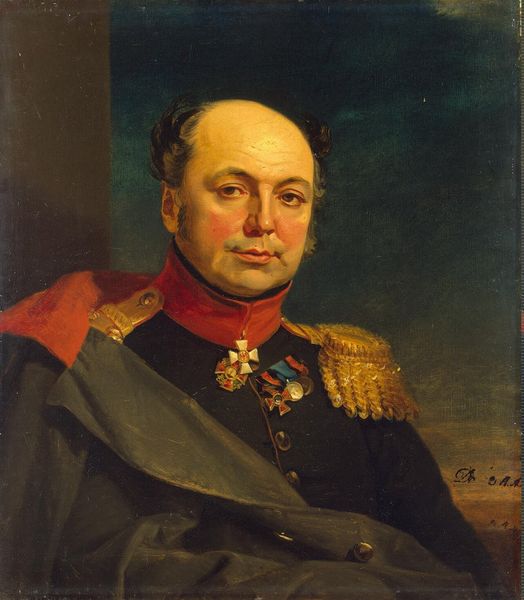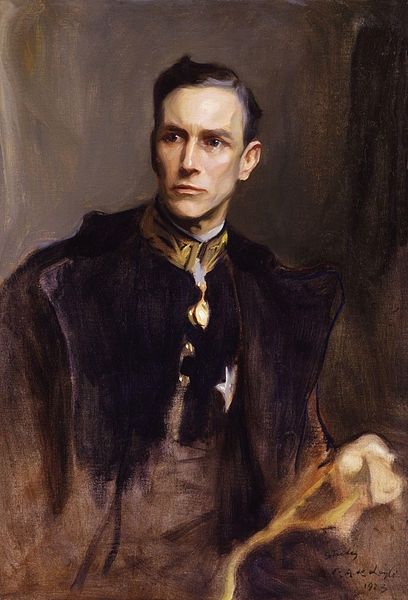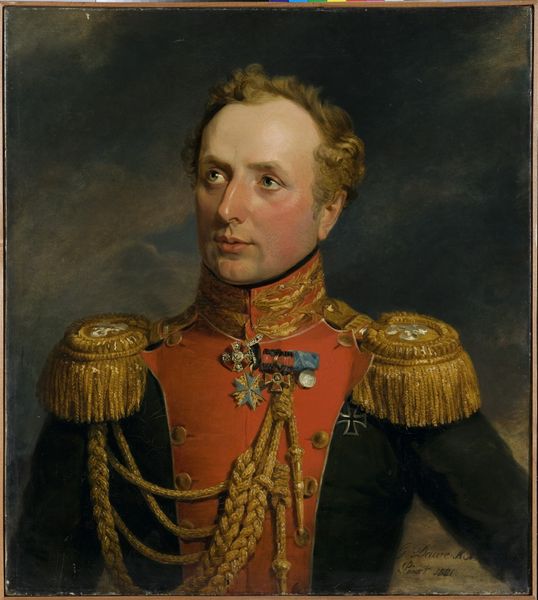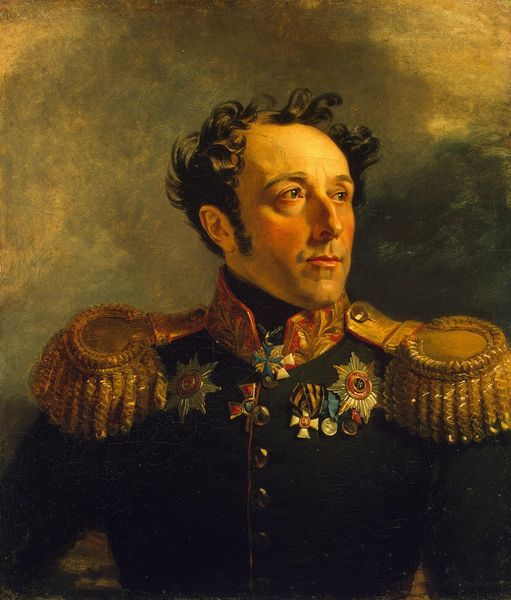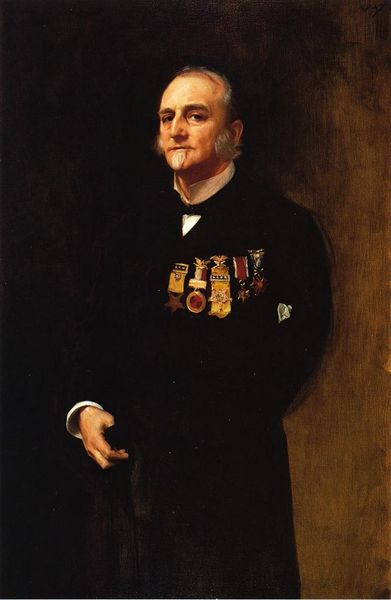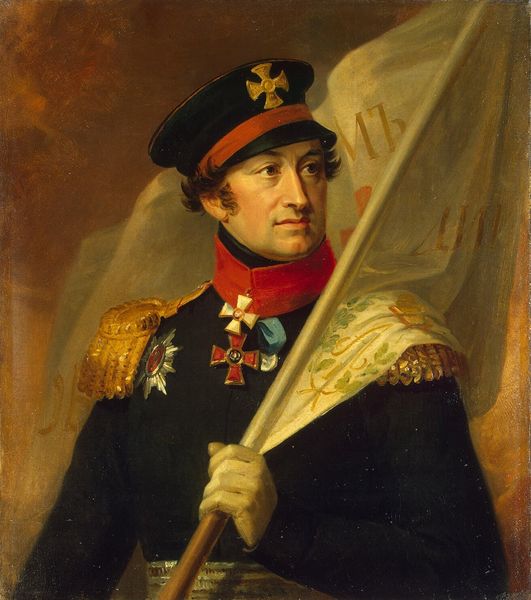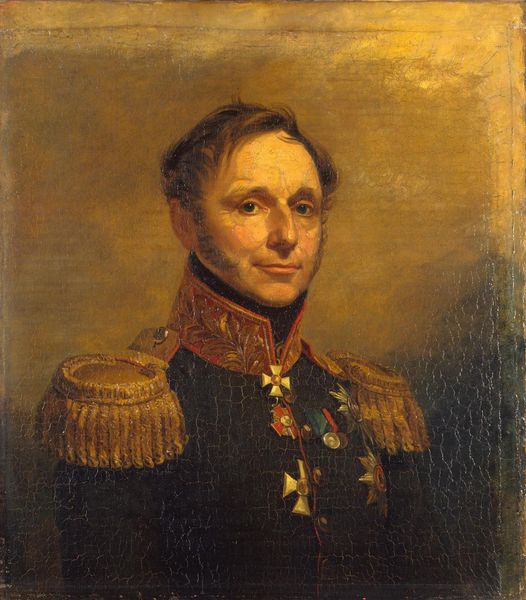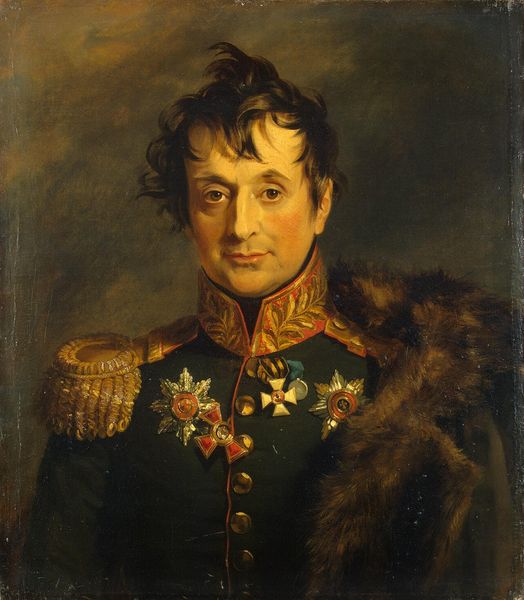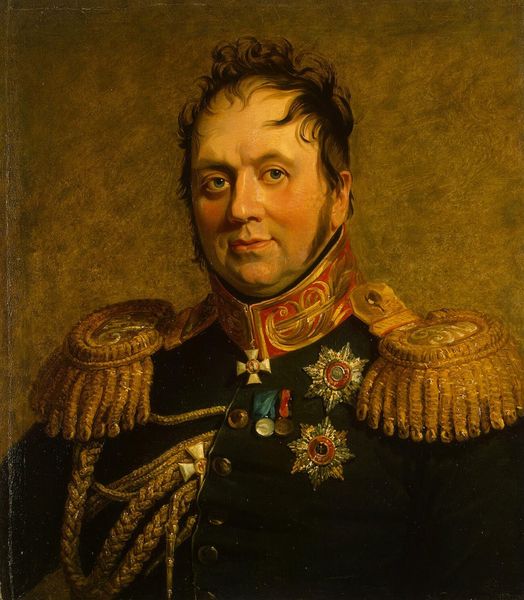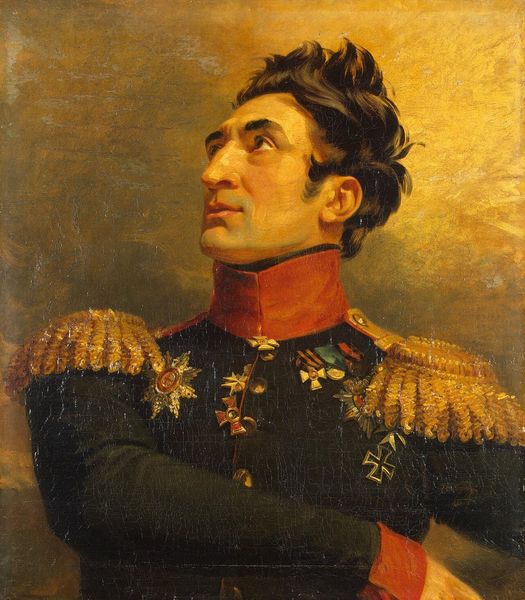
Copyright: Public Domain: Artvee
Editor: We're looking at "Portrait of an Officer" by Gyula Benczúr, painted in 1919 with oil paint. It strikes me as quite formal and perhaps a bit romanticized. What do you see in this piece? Curator: This image speaks volumes through its symbols. The officer’s attire, heavy with medals, speaks of honor and duty but also loss, considering its creation post-World War I. Do you notice the somber, almost detached gaze? Editor: Yes, he seems lost in thought, even melancholic. The medals do seem significant, a testament to past action. Curator: Exactly. These aren't mere decorations. They are emblems carrying societal expectations and psychological burdens. How do you interpret the fur trim around his collar? Editor: Perhaps a symbol of status or power? Curator: Partly. But also think of it as insulation. A buffer perhaps against a harsh reality. Benczúr’s meticulous depiction invites us to decode the emotional armor this man wears. Editor: So the painting becomes a cultural document, revealing more than just a likeness. It displays social status, psychological impact of the historical period, and symbols of hope? Curator: Precisely! The layered symbols work in tandem to give us a peek into this man’s emotional landscape during an era of change. We can consider him a representative figure for those turbulent times. Editor: I never considered the symbols as carrying this much weight. I was focused solely on the appearance. It makes me view portraits in an entirely new light now. Curator: Understanding symbolism unlocks layers of meaning in art. Every detail can reveal societal values and personal narratives, enhancing the historical moment of artistic interpretation.
Comments
No comments
Be the first to comment and join the conversation on the ultimate creative platform.
